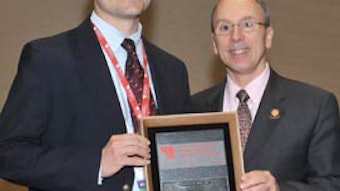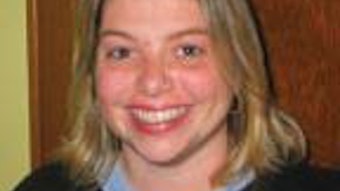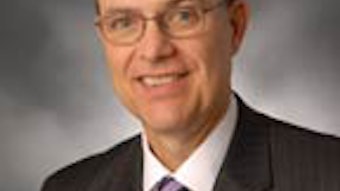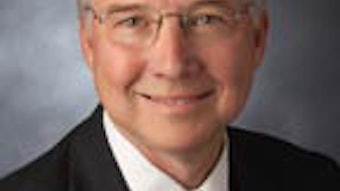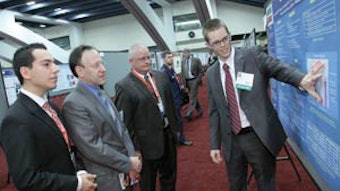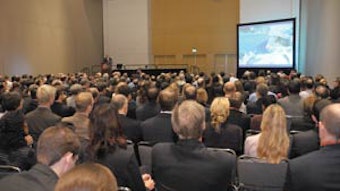Continuing Our Cleft-Palate Mission in Nicaragua
Chad A. Glazer, MD, Johns Hopkins Department of Otolaryngology—Head and Neck Surgery, Resident Humanitarian Travel Grantee In May 2011, I was fortunate to have the opportunity to return to Nicaragua with a 10-person mission team, composed of physicians and nurses from The Johns Hopkins Hospital and the Greater Baltimore Medical Center (GBMC). Patrick J. Byrne, MD, director of the facial plastic and reconstructive surgery division at Hopkins and co-director of the cleft lip and palate team at GBMC, led this team. His past and present fellows in facial plastic and reconstructive surgery, Taha Z. Shipchandler, MD, and Krista M. Rodriguez-Bruno, MD, also accompanied us. Our work began early Sunday morning in Chichigalpa, a small town on a sugar cane plantation three hours north of Managua. We triaged more than 90 patients in the same small, partially open-air hospital as the year before. During the week, we performed more than 60 operations, including multiple cleft-palate repairs, fistula repairs, pharyngeal flaps, first- and second-stage microtia repairs, and cleft rhinoplasties. As a resident, I found these mission trips provided me with an unparalleled learning opportunity, both as a surgeon and a person. During this trip, I had the chance to see patients on whom we had operated the previous year. Seeing the lasting impact on these children and their families has been incredibly rewarding. In addition to the surgical care that I helped provide to these children over the past two years, I continued my work with Dr. Byrne on a project that uses Internet-based telecommunications to provide speech therapy to cleft palate patients suffering from VPI and other speech impediments following surgical repair. My involvement with this project began almost two-and-a-half years ago.1 I presented our preliminary data at the 2011 American Cleft Palate-Craniofacial Association annual meeting in San Juan, Puerto Rico. Since then, with the help of our talented speech-language pathologist, Patti Bailey, MS, CCC-SLP, and using a web-based camera and laptop computer, we have enrolled more than 25 patients in this study and helped provide multidisciplinary care to more than 15 children who live 3,000 miles away. During our monthly telehealth sessions, we saw many of our postoperative patients and provided continuity of care never before possible with mission trips to the developing world. Through our special relationship with the charitable organization APROQUEN, founded by Vivian Pellas, and the extremely dedicated team of physicians, surgeons, and support staff in Nicaragua, we will work toward our ultimate goal of helping to develop a cleft palate center of excellence in Nicaragua over the next three years. It is our hope that our partnership and continued provision of guidance, along with human and physical resources, both on the ground and via telemedicine, will allow for all Nicaraguan children who suffer from cleft deformities to receive the same high level of multidisciplinary care provided to U.S. patients. I am truly indebted to the AAO-HNS Foundation for the humanitarian travel grant funded by the Alcon Foundation for helping to fund my trip to Nicaragua this year. This experience, like that of the previous year, allows me to reflect on the motivations and desires that initially compelled me to pursue medicine and otolaryngology. These truly meaningful and fulfilling experiences will continue to inspire and guide me throughout my career, and I have no doubt that humanitarian work will continue to be an integral aspect of my future practice. Reference “Changing the Face of Cleft-Palate Mission Work.” Bulletin, 2010, November: page 29.
Chad A. Glazer, MD, Johns Hopkins Department of Otolaryngology—Head and Neck Surgery, Resident Humanitarian Travel Grantee
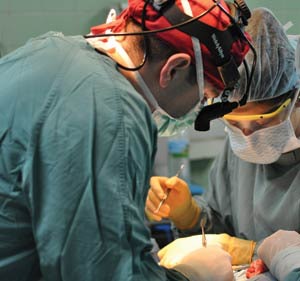 Dr. Glazer and Dr. Rodriguez-Bruno harvesting a rib graft.
Dr. Glazer and Dr. Rodriguez-Bruno harvesting a rib graft.In May 2011, I was fortunate to have the opportunity to return to Nicaragua with a 10-person mission team, composed of physicians and nurses from The Johns Hopkins Hospital and the Greater Baltimore Medical Center (GBMC). Patrick J. Byrne, MD, director of the facial plastic and reconstructive surgery division at Hopkins and co-director of the cleft lip and palate team at GBMC, led this team. His past and present fellows in facial plastic and reconstructive surgery, Taha Z. Shipchandler, MD, and Krista M. Rodriguez-Bruno, MD, also accompanied us.
Our work began early Sunday morning in Chichigalpa, a small town on a sugar cane plantation three hours north of Managua. We triaged more than 90 patients in the same small, partially open-air hospital as the year before. During the week, we performed more than 60 operations, including multiple cleft-palate repairs, fistula repairs, pharyngeal flaps, first- and second-stage microtia repairs, and cleft rhinoplasties.
As a resident, I found these mission trips provided me with an unparalleled learning opportunity, both as a surgeon and a person. During this trip, I had the chance to see patients on whom we had operated the previous year. Seeing the lasting impact on these children and their families has been incredibly rewarding.
In addition to the surgical care that I helped provide to these children over the past two years, I continued my work with Dr. Byrne on a project that uses Internet-based telecommunications to provide speech therapy to cleft palate patients suffering from VPI and other speech impediments following surgical repair.
My involvement with this project began almost two-and-a-half years ago.1 I presented our preliminary data at the 2011 American Cleft Palate-Craniofacial Association annual meeting in San Juan, Puerto Rico. Since then, with the help of our talented speech-language pathologist, Patti Bailey, MS, CCC-SLP, and using a web-based camera and laptop computer, we have enrolled more than 25 patients in this study and helped provide multidisciplinary care to more than 15 children who live 3,000 miles away.
During our monthly telehealth sessions, we saw many of our postoperative patients and provided continuity of care never before possible with mission trips to the developing world. Through our special relationship with the charitable organization APROQUEN, founded by Vivian Pellas, and the extremely dedicated team of physicians, surgeons, and support staff in Nicaragua, we will work toward our ultimate goal of helping to develop a cleft palate center of excellence in Nicaragua over the next three years.
It is our hope that our partnership and continued provision of guidance, along with human and physical resources, both on the ground and via telemedicine, will allow for all Nicaraguan children who suffer from cleft deformities to receive the same high level of multidisciplinary care provided to U.S. patients.
I am truly indebted to the AAO-HNS Foundation for the humanitarian travel grant funded by the Alcon Foundation for helping to fund my trip to Nicaragua this year. This experience, like that of the previous year, allows me to reflect on the motivations and desires that initially compelled me to pursue medicine and otolaryngology.
These truly meaningful and fulfilling experiences will continue to inspire and guide me throughout my career, and I have no doubt that humanitarian work will continue to be an integral aspect of my future practice.
Reference
“Changing the Face of Cleft-Palate Mission Work.”
Bulletin, 2010, November: page 29.

